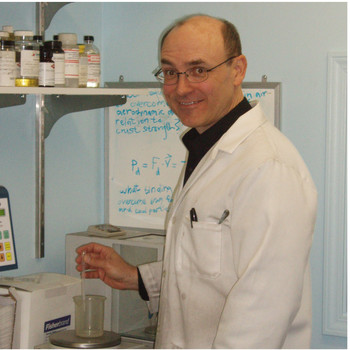How much energy, in joules, must be absorbed if all the O_3O3 molecules in the sample of air are to dissociate? Assume that each photon absorbed causes one O_3O3 molecule to dissociate, and that the wavelength of the radiation is 254 nm.
Information provided with question
Ozone, O_3O3 , absorbs ultraviolet radiation and dissociates into O_2O2 molecules and OO atoms:
O_3+h\nu→O_2+O.O3+hν→O2+O.
A 1.85-LL sample of air at 22°C and 748 mmHg contains 0.25 ppm of O_3 .
My thoughts
I assume "parts per million" (ppm) is "(mL)/L "?
Also, I don't really know what section I should be posting this in, sorry.
Information provided with question
Ozone,
A 1.85-
My thoughts
I assume "parts per million" (ppm) is "
Also, I don't really know what section I should be posting this in, sorry.
2 Answers
8.9 mJ
Explanation:
This is a very difficult problem. What makes it difficult is the number of steps involved in getting to the answer.
The outline of how we are going to solve the problem is this:
1) figure out how much energy, in Joules, a single photon of 254 nm light has.
2) figure out how many ozone molecules you have in the container. This is even more complicated because "ppm" can refer to mg/kg or
3) multiply the two together to get the answer.
So, step 1: we will use E = hc/
Reality check: is this number reasonable?
(Yes! A Joule is a significant amount of heat--enough that you can feel it on your skin. But one photon has a very small amount of energy. so a very small number is what we are expecting for this step of the problem.)
Step 2: We will rearrange the ideal gas equation to determine how many moles of gas are present.
We will then take 0.25 ppm(vol) of that for the number of moles of ozone present.
Reality check: we know at STP that 1 mole of gas occupies 22.414 liters. We have calculated a little less than 1/10 of a mole here, and that fits since the volume is a little less than 2 liters and the pressure is a little less than 1 atm.
So far, so good!
So how many molecules of ozone do we have?
Now to multiply the part 1 answer by the part 2 answer:
For this question, the limiting number of significant figures is 2 from the 0.25 ppm ozone concentration. Thus the final answer is
8.9 mJ.
WARNING! Long answer! The energy absorbed is 8.9 mJ.
Explanation:
Step 1: Calculate the number of molecules in the container.
The Ideal Gas Law is
color(blue)(bar(ul(|color(white)(a/a) PV=nRTcolor(white)(a/a)|)))" "
We can rearrange the formula to get
n = (PV)/(RT)
In this problem,
Step 2. Calculate the number of gas molecules
Step 3. Calculate the number of
Step 4. Calculate the energy absorbed by 1
The formula for the energy
color(blue)(bar(ul(|color(white)(a/a) E = (hc)/λ color(white)(a/a)|)))" "
where
Step 5. Calculate the energy absorbed by all the


